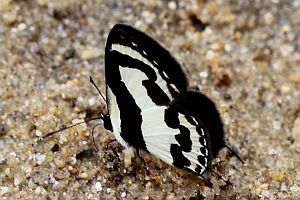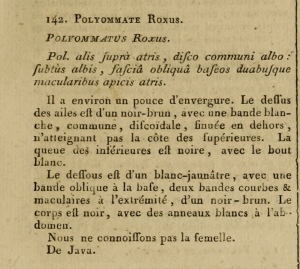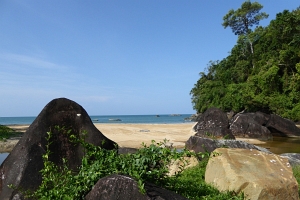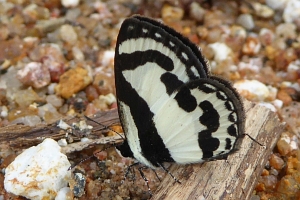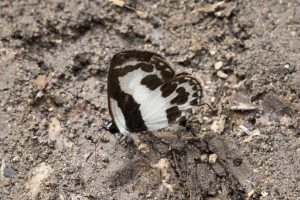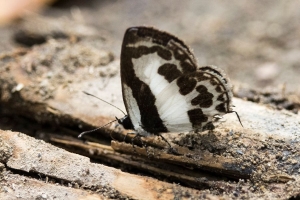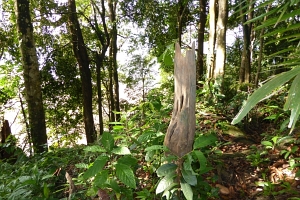Version 6 (neueste) vom 11. Februar 2024 um 12:19:52 von Michel Kettner
Länder:

 +12Kontinente:AS
+12Kontinente:AS


 +12Kontinente:AS
+12Kontinente:ASInhalt
1. Lebendfotos
1.1. Falter
1: Thailand, Koh Samui, Hin-Lat-Wasserfall, 20. August 2017 (det. & fot.: Helene Otto)Forum
2: Thailand, Provinz Phang Nga, Lam Kaen, ca. 10 m, 10. November 2014 (det. & fot.: Peter Ginzinger)Forum
3-4: Indonesien, West-Nusa Tenggara (Sumbawa), Insel Moyo, Kleiner Bach mit Wasserfällen im Wald, ca. 150 m, 29. Juni 2023 (det. & fot.: Gudrun Müller), conf. Dominik HoferForum
2. Diagnose
2.1. Erstbeschreibung
1: Godart ([1824]: 659) [nach Copyright-freiem Scan auf www.biodiversitylibrary.org]
3. Biologie
3.1. Habitat
1-2: Thailand, Provinz Phang Nga, Lam Kaen, ca. 10 m, 11. & 13. November 2014 (fot.: Peter Ginzinger)Forum
4. Weitere Informationen
4.1. Andere Kombinationen
- Polyommatus roxus Godart, [1824] [Originalkombination]
- Pycnophallium roxus (Godart, [1824])
4.2. Unterarten
- Pycnophallium roxus manluena (Felder, 1862) [Unterart nach funet.fi]
- Pycnophallium roxus angustior (Staudinger, 1889) [Unterart nach funet.fi]
- Pycnophallium roxus roxana (de Nicéville, 1897) [Unterart nach funet.fi]
- Pycnophallium roxus pothus (Fruhstorfer, 1918) [Unterart nach funet.fi]
- Pycnophallium roxus astapus (Fruhstorfer, 1918) [Unterart nach funet.fi]
- Pycnophallium roxus odon (Fruhstorfer, 1918) [Unterart nach funet.fi]
- Pycnophallium roxus xisana (Fruhstorfer, 1918) [Unterart nach funet.fi]
- Pycnophallium roxus afranius (Fruhstorfer, 1922) [Unterart nach funet.fi]
- Pycnophallium roxus pemanggilensis Eliot, 1978 [Unterart nach funet.fi]
- Pycnophallium roxus rhodoides Eliot, 1992 [Unterart nach funet.fi]
4.3. Faunistik
Nach [Global Biodiversity Information Facility] kommt die Art in Thailand, Malaysia, Indonesien, Philippinen, China, Indien, Kambodscha, Myanmar, Laos, Vietnam und Sri Lanka vor.
Locus typicus gemäß Erstbeschreibung: Java.
(Autor: Michel Kettner)
4.4. Literatur
- Erstbeschreibung: Latreille & Godart [1824]: Encyclopédie méthodique. Histoire naturelle. Entomologie, ou histoire naturelle des crustacés, des arachnides et des insectes 9 (2): 329-828. Paris (Agasse).












